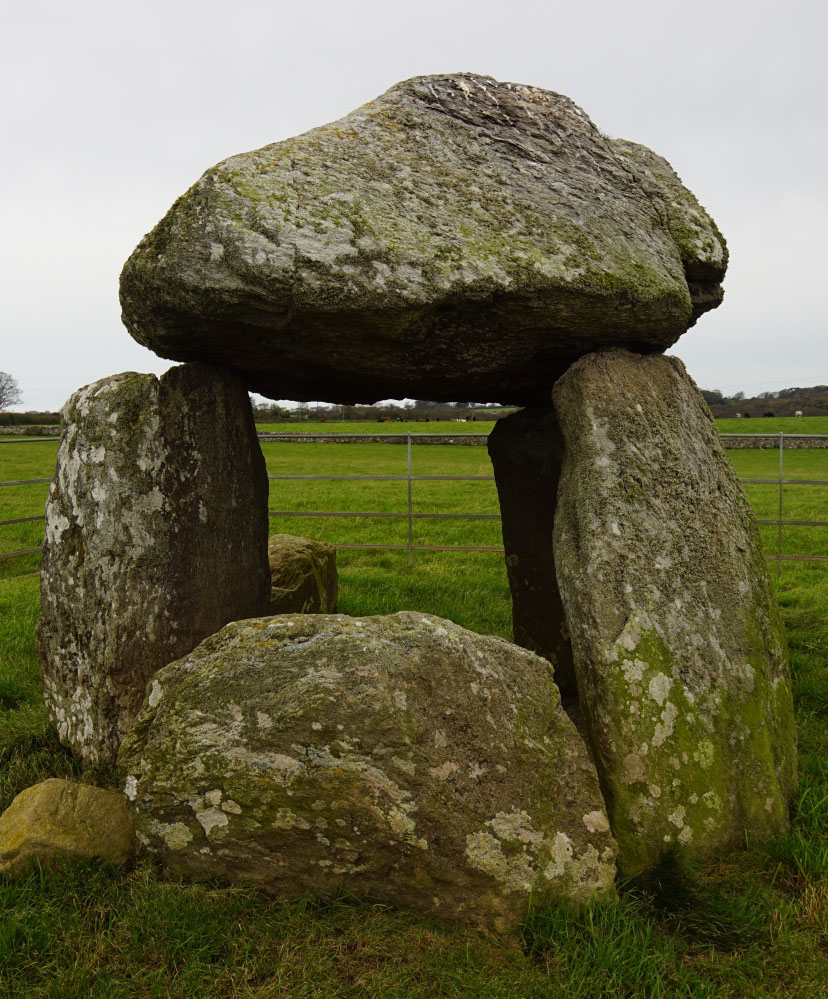History
The tomb in Bodowyr was built in about 4000 BC until about 2000 BC, probably as a place of burials or religious rites of the surrounding, early agricultural population. Used for many centuries, it was possible that it was family tomb or it belonged to specific tribes. The interest in the object began in the 18th century, when the stones excavated from the mound were first described.
Architecture
Bodowyr was erected as a passage-type tomb with a corridor from the south-east to the central burial chamber, placed under an earth mound. The chamber and passage were supported on at least three stones, about 1.5 meters high, on which a huge capstone measuring 1.8 x 2.4 meters was used as a ceiling. The stones have not been processed with tools, but only carefully selected in terms of shape and size. It is not known whether the tomb had other smaller chambers. The whole was originally covered with a mound of earth or smaller stones.
Current state
Until today, there is no earth mound, originally covering the chamber. Three vertical stones, about a one and a half meters high, have been preserved from the burial chamber, supporting a large capstone measuring 2.4 x 1.8 meters. A stone lying nearby on the west side could be part of the structure, perhaps it was a vertical or blocking element of the structure. Another low stone at the east entrance was probably a sidewalk or parapet. Bodowyr is open to tourists all year round between 10.00 and 16.00, except on 24, 25 and 26 December and 1 January. Admission is free of charge.
bibliography:
Castleden R., Neolithic Britain: New Stone Age sites of England, Scotland and Wales, London 1992.
The Royal Commission on The Ancient and Historical Monuments and Constructions in Wales and Monmouthshire. An Inventory of the Ancient Monuments in Anglesey, London 1937.




